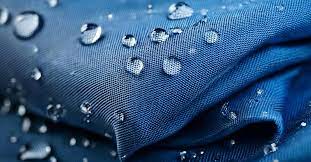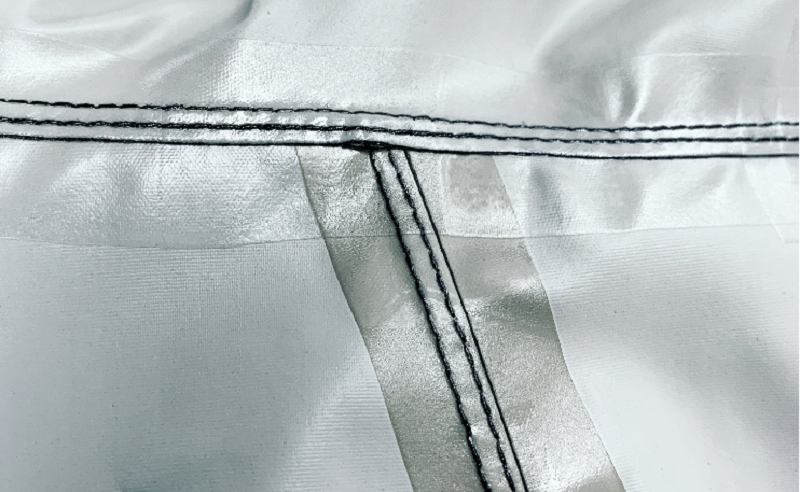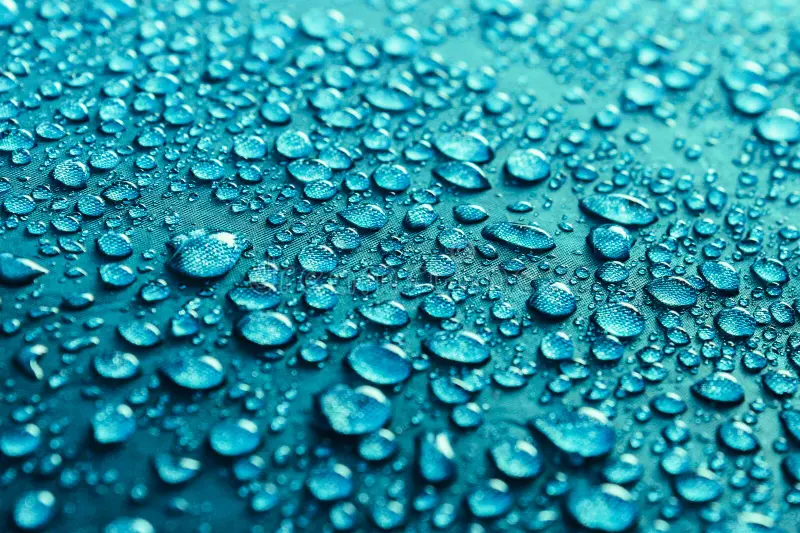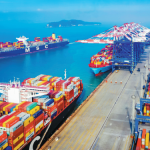In the world of outdoor gear and bags, the term “waterproof” is used so frequently that its true meaning can get lost. As a brand, making accurate claims is crucial for building customer trust. What is the difference between waterproof and water-resistant? Understanding this distinction is fundamental to selecting the right backpack material for your products. This guide will clarify these terms, explore the technology behind them, and help you choose the perfect waterproof nylon fabric for your needs. Get expert advice on your material selection here.
Defining the Terms: What is Water-Resistant Fabric?
A water-resistant fabric is the first line of defense against moisture. It’s designed to resist water penetration, but not entirely block it, especially under pressure or prolonged exposure.
The Role of a Tight Weave in Repelling Water
The construction of the fabric itself plays a role. A tight weave in nylon creates a surface that naturally causes water to bead up and roll off rather than soaking in immediately. However, this alone is not enough to handle more than a light shower.
Understanding DWR (Durable Water Repellent) Coatings
Most water-resistant fabrics are treated with a DWR coating. This is a chemical finish applied to the exterior that enhances the fabric’s ability to repel water (hydrophobicity). It’s why you see water droplets bead on the surface of a new jacket. Over time and with use, this coating can wear off.

The Next Level: What Makes a Fabric Truly Waterproof?
A truly waterproof fabric provides a complete barrier to water. Even under pressure, like being at the bottom of a heavy pack in a downpour, water will not penetrate it.
The Importance of PU or TPU Coatings
To achieve this, the fabric is coated or laminated on the backside with a solid membrane, typically Polyurethane (PU) or Thermoplastic Polyurethane (TPU). This PU coating physically blocks water from passing through the fabric’s pores, creating an impermeable layer.

Why Seam Sealing is Non-Negotiable
A waterproof fabric is useless if water can leak through the stitching holes. Seam sealing is the process of applying waterproof tape over the seams on the inside of the product. This critical step ensures that the entire construction, not just the fabric, is impervious to water. Without it, a product cannot be considered truly waterproof.

Understanding Hydrostatic Head Ratings (mmH2O)
The degree of waterproofness is measured professionally by a Hydrostatic Head rating. This test measures how much water pressure a fabric can withstand before it starts to leak. A rating of 1,500mm is a good starting point for waterproofness, while high-performance outdoor gear can have ratings of 10,000mm or more.
Nylon as a Base Backpack Material: Strengths and Weaknesses
Is nylon waterproof? On its own, no. However, it is an excellent base fabric for creating waterproof materials.
Why Nylon is a Popular Choice for Bags
Nylon is incredibly strong, durable, and resistant to abrasion, making it an ideal choice for backpacks and custom bags. Its synthetic nature also makes it a perfect canvas for applying various coatings and treatments.
The Inherent Water Absorption of Untreated Nylon
Untreated nylon fibers will absorb water, causing the fabric to become heavy and sag. This is precisely why treatments like DWR and PU coatings are essential to transform it into a high-performance, weather-ready backpack material.
At a Glance: Waterproof vs. Water-Resistant Comparison Table
To make it simple, here is a direct comparison table.
Key Differences in Performance, Cost, and Use Case
| Feature | Water-Resistant | Waterproof |
|---|---|---|
| Technology | Tight Weave + DWR Coating | PU/TPU Coating + Seam Sealing |
| Protection Level | Light rain, splashes, brief exposure | Heavy rain, prolonged exposure, pressure |
| Breathability | Generally higher | Lower (can be improved with tech) |
| Cost | Lower | Higher |
| Best For | School bags, daily commuters, lifestyle | Hiking packs, travel duffels, dry bags |
Choosing the Right Fabric for Your Custom Bags
The right choice depends entirely on your product’s intended use and your customer’s expectations.
When to Choose Water-Resistant for Everyday Backpacks
For a backpack designed for urban commuting or daily school use, a water-resistant fabric is often sufficient. It provides adequate protection against unexpected light rain without the added cost and reduced breathability of a fully waterproof system.
When to Invest in Waterproof for Performance Outdoor Gear
For a serious hiking backpack or a travel bag meant for adventure, investing in a fully waterproof nylon fabric with sealed seams is crucial. It’s a key performance feature that justifies a higher price point and builds trust with serious users.

Making an Informed Material Choice for a Superior Product
Understanding the nuances between waterproof and water-resistant allows you to make smarter design choices, manage costs effectively, and market your products with integrity. It’s this attention to technical detail that elevates a good product to a great one.
Need help selecting the perfect performance fabric for your next backpack collection? Speak with our material experts at BMLineColl.com.
Frequently Asked Questions About Waterproof Fabrics
Can a waterproof bag be fully submerged in water?
Can a waterproof bag be fully submerged in water? Not necessarily. While the fabric itself may be waterproof, submersion puts immense pressure on zippers and closures. Bags designed for full submersion (like dry bags for kayaking) require special closures like roll-tops or waterproof zippers and are often rated with an IPX score.
How do I care for and maintain the water-repellent properties of a bag?
How do I care for and maintain the water-repellent properties of a bag? For DWR-coated (water-resistant) bags, you can gently clean the surface and reapply a DWR spray over time. For waterproof bags, simply cleaning the surface is usually enough. Avoid harsh detergents that can damage the PU coating.
Does a higher Denier (D) number mean a fabric is more waterproof?
Does a higher Denier (D) number mean a fabric is more waterproof? No. Denier is a measure of the fiber’s thickness and relates to the fabric’s weight and abrasion resistance, not its waterproofness. A thick 1000D nylon fabric is not waterproof without a proper coating and sealed seams, while a much thinner 70D nylon can be fully waterproof if treated correctly. For a deep dive into material options for your project, contact our team.



